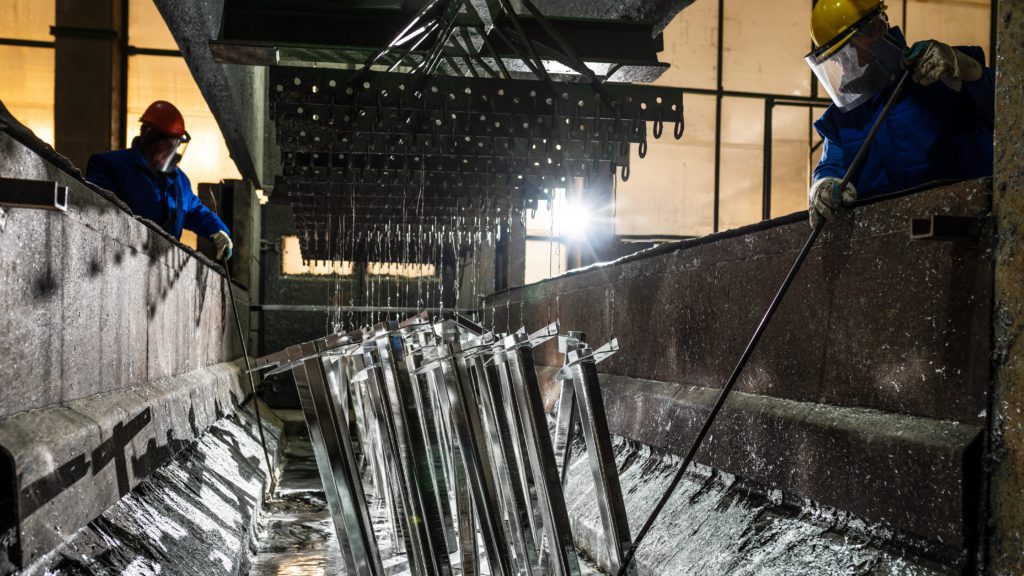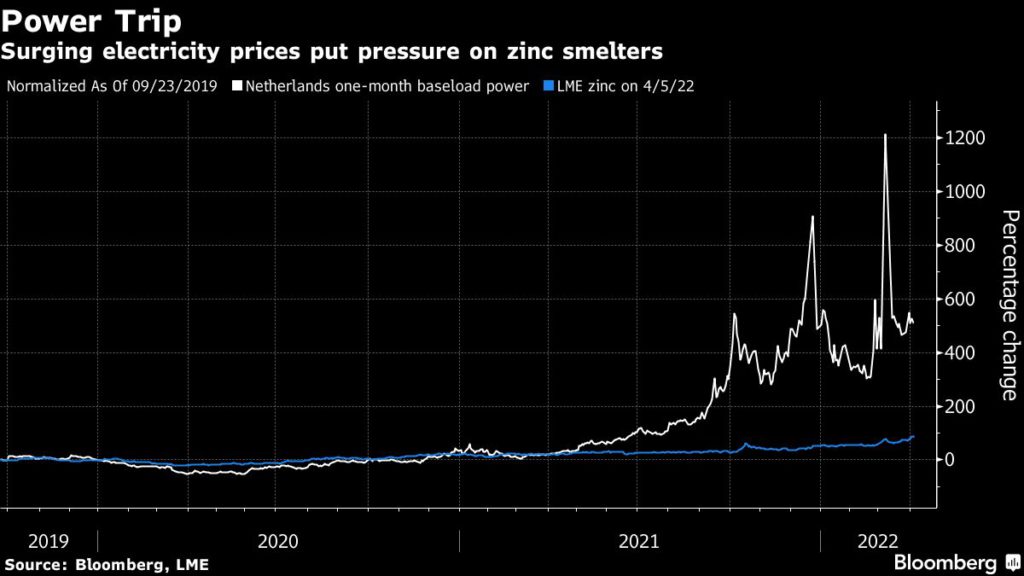Zinc smelters win big fee increase as cutbacks throttle output

Zinc smelters have won a major increase in treatment fees, after cutbacks in capacity across Europe and the U.S. throttled refined metal output and helped lift prices to record highs.
Korea Zinc Co and Glencore Plc agreed annual zinc concentrate supply contracts with miner Teck Resources Ltd. that include a 45% increase in treatment charges to $230 per tonne, according to people familiar with the matter. Teck Resources, Glencore and Korea Zinc all declined to comment.
The sharp jump underlines the imbalance between relatively resilient mine supply and smelting curbs that have created shortages of the finished metal. Zinc posted the highest close since 2006 on Monday as declining inventories show supply strains, while a renewed spike in European power prices piles further pressure on smelters.
“Mine supply has been pretty robust and is showing signs of improvement,” Geordie Wilkes, head of research at Sucden Financial, said by phone from London. “It’s the smelter bottlenecks that have been causing the problem, and this is further confirmation that that’s where the pressure is.”

The negotiations over smelter fees were complicated by lower zinc prices in China, said Ryan Cochrane, head of research at metal concentrate trading platform Open Mineral.
“You’ve got a really bimodal world for zinc and what’s driven this negative arbitrage is tightness in Europe and the U.S. markets against comparatively very very weak demand in China, with more refined metal there,” Cochrane said. Spot cargoes could be sold at treatment charges of $250 per tonne, he said.
Glencore and Trafigura Group — two of the world’s largest producers of zinc metal — announced cutbacks last year as surging power costs undermined the viability of their smelting operations even as prices soared.
Higher processing fees will offer some relief. The Teck contracts also includes a newly reinstated clause that will give plants exposure to the recent surge in zinc prices. These so-called escalators will kick in when prices are above $3,800 a tonne, effectively raising treatment charges by 5%.
Written out of annual contracts in 2018 as miners sought to maximize their profits, the reinstatement of escalators is another sign that the balance of power is shifting back toward smelters.
“If you can’t make money as a smelter in this kind of environment, it’s very difficult,” said Cochrane.
Meanwhile, record zinc prices have encouraged mining companies to boost output. Mine supply grew by 4.5% in 2021, according to the International Lead and Zinc Study Group.
Zinc slipped 1.4% to $4,306 a tonne on the London Metal Exchange as of 12:20 p.m. local time. The metal hit a record intraday high of $4,896 on March 8 during frenzied LME trading that led the bourse to suspend activity in the nickel market.
Copper climbed 0.3% to $10,508 a tonne, moving back toward the record high it reached last month. Investors are weighing the risk that China’s omicron outbreak will hit supply harder than demand.
(By Archie Hunter and Mark Burton, with assistance from Heejin Kim and Yvonne Yue Li)
{{ commodity.name }}
{{ post.title }}
{{ post.date }}

Comments